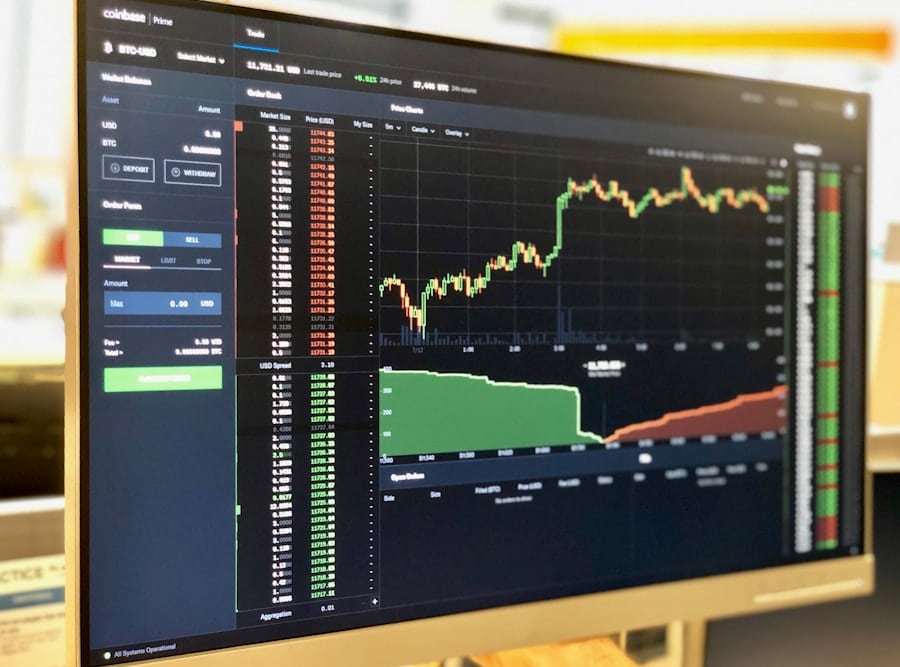Anomaly detection is a critical component of modern finance systems, serving as a safeguard against irregularities that could indicate fraud, operational errors, or systemic failures. In an industry where vast amounts of data are generated daily, the ability to identify deviations from expected patterns is paramount. Anomalies can manifest in various forms, such as unusual transaction amounts, unexpected trading volumes, or atypical customer behavior.
The financial sector, characterized by its complexity and the high stakes involved, necessitates robust mechanisms to detect these anomalies swiftly and accurately. The evolution of technology has significantly enhanced the capabilities of anomaly detection systems. Traditional methods often relied on statistical techniques and rule-based systems, which, while effective to some extent, struggled to keep pace with the dynamic nature of financial transactions.
As financial institutions increasingly adopt digital platforms and big data analytics, the need for more sophisticated anomaly detection mechanisms has become evident. This shift has paved the way for the integration of artificial intelligence (AI) and machine learning (ML) into anomaly detection frameworks, enabling organizations to harness the power of advanced algorithms to identify irregularities with greater precision and speed.
Key Takeaways
- Anomaly detection is crucial in finance systems to identify irregularities and potential fraud.
- AI is revolutionizing anomaly detection in finance by automating the process and improving accuracy.
- Using AI for anomaly detection in finance can lead to cost savings, improved efficiency, and better risk management.
- Challenges of AI in anomaly detection include data quality, interpretability, and potential biases.
- Best practices for implementing AI in anomaly detection in finance include thorough data preparation, continuous monitoring, and collaboration between data scientists and finance professionals.
The Importance of Anomaly Detection in Finance
Early Fraud Detection
An effective anomaly detection system acts as a first line of defense, helping organizations identify potential fraud before it escalates into significant financial losses. For instance, credit card companies utilize anomaly detection algorithms to flag transactions that deviate from a customer’s typical spending behavior, allowing them to intervene promptly and prevent unauthorized charges.
Regulatory Compliance
Moreover, anomaly detection plays a crucial role in regulatory compliance. Financial institutions are subject to stringent regulations designed to prevent money laundering, terrorist financing, and other illicit activities. Regulatory bodies require organizations to maintain robust monitoring systems that can detect suspicious activities in real-time.
Protecting Assets and Reputation
Failure to comply with these regulations can result in hefty fines and reputational damage. By implementing effective anomaly detection mechanisms, financial institutions can not only protect their assets but also ensure adherence to regulatory standards.
How AI is Revolutionizing Anomaly Detection in Finance

Artificial intelligence is transforming the landscape of anomaly detection in finance by introducing advanced analytical capabilities that surpass traditional methods. Machine learning algorithms can analyze vast datasets at unprecedented speeds, identifying patterns and correlations that would be impossible for human analysts to discern. These algorithms learn from historical data, continuously improving their accuracy over time as they adapt to new trends and behaviors within the financial ecosystem.
One of the most significant advantages of AI in anomaly detection is its ability to process unstructured data. Financial transactions often involve a mix of structured data (such as transaction amounts and timestamps) and unstructured data (such as customer reviews or social media sentiment).
For example, a bank might use AI to analyze transaction data alongside customer feedback on social media platforms to identify unusual patterns that could indicate fraudulent activity or service issues.
Benefits of Using AI for Anomaly Detection in Finance
The integration of AI into anomaly detection systems offers numerous benefits that enhance the effectiveness and efficiency of financial monitoring processes. One of the primary advantages is the reduction in false positives. Traditional anomaly detection methods often generate numerous alerts for benign activities, overwhelming analysts and leading to alert fatigue.
AI algorithms, trained on historical data, can distinguish between genuine anomalies and normal variations in behavior, significantly reducing the number of false alarms and allowing analysts to focus on high-risk cases. Additionally, AI-driven anomaly detection systems can operate in real-time, providing immediate insights into potential threats. This capability is particularly crucial in high-frequency trading environments where milliseconds can make a difference in mitigating risks.
For instance, an AI system can monitor trading patterns continuously and alert traders to unusual spikes or drops in stock prices that may indicate market manipulation or other illicit activities. The speed and accuracy of AI systems enable financial institutions to respond proactively rather than reactively, enhancing their overall risk management strategies.
Challenges and Limitations of AI in Anomaly Detection
Despite the numerous advantages that AI brings to anomaly detection in finance, several challenges and limitations must be addressed. One significant concern is the quality of data used to train AI models. Inaccurate or biased data can lead to flawed algorithms that fail to detect genuine anomalies or generate excessive false positives.
Financial institutions must invest in data governance practices to ensure that their datasets are clean, representative, and free from biases that could skew results. Another challenge lies in the interpretability of AI models. Many machine learning algorithms operate as “black boxes,” making it difficult for analysts to understand how decisions are made.
This lack of transparency can hinder trust in AI systems, particularly in regulated environments where accountability is paramount.
Best Practices for Implementing AI in Anomaly Detection in Finance

Define Clear Objectives
Establishing a clear understanding of specific goals and objectives is crucial for anomaly detection. This clarity will guide the selection of appropriate algorithms and data sources tailored to their unique needs.
Cross-Functional Collaboration
Collaboration between data scientists and domain experts is essential for developing effective anomaly detection models. Data scientists bring technical expertise in machine learning, while domain experts possess invaluable insights into financial processes and potential risks.
Ongoing Model Refining
Continuous monitoring and model retraining are critical components of a successful AI implementation strategy. Financial markets are dynamic, and patterns can change rapidly due to economic shifts or emerging technologies. Regularly updating models with new data ensures that anomaly detection systems remain relevant and effective over time.
Case Studies of Successful AI Anomaly Detection in Finance
Several financial institutions have successfully implemented AI-driven anomaly detection systems, showcasing the technology’s potential to enhance security and operational efficiency. One notable example is PayPal, which employs machine learning algorithms to monitor transactions for signs of fraud. By analyzing user behavior patterns and transaction histories, PayPal’s system can identify anomalies that may indicate fraudulent activity.
This proactive approach has significantly reduced fraud rates while improving customer trust. Another compelling case is that of JPMorgan Chase, which has integrated AI into its anti-money laundering (AML) efforts. The bank utilizes machine learning models to analyze transaction data across its vast network, identifying suspicious activities that may warrant further investigation.
By automating parts of the AML process, JPMorgan Chase has improved its ability to detect potential money laundering schemes while reducing the burden on compliance teams.
The Future of AI in Anomaly Detection Across Finance Systems
Looking ahead, the future of AI in anomaly detection within finance systems appears promising yet complex. As technology continues to evolve, we can expect advancements in natural language processing (NLP) and deep learning techniques that will further enhance anomaly detection capabilities. These innovations will enable financial institutions to analyze even more diverse datasets, including text-based information from news articles or regulatory filings.
Moreover, the integration of blockchain technology may revolutionize how anomalies are detected and addressed within finance systems. Blockchain’s inherent transparency and immutability could provide a robust framework for tracking transactions and identifying irregularities in real-time. As organizations explore these emerging technologies, collaboration between fintech startups and traditional financial institutions will likely accelerate innovation in anomaly detection.
In conclusion, while challenges remain in implementing AI for anomaly detection in finance, the potential benefits far outweigh the obstacles. As financial institutions continue to embrace digital transformation and leverage advanced technologies, the role of AI in safeguarding against anomalies will only grow more critical. The ongoing evolution of this field promises not only enhanced security but also greater efficiency and resilience within the financial sector as a whole.
In a recent article on Exploring the Features of the Samsung Galaxy Book Odyssey, the advancements in technology are highlighted, showcasing how AI is revolutionizing various industries. Just like in the finance sector, where AI is playing a crucial role in anomaly detection across systems, the Samsung Galaxy Book Odyssey is incorporating AI features to enhance user experience and performance. This article sheds light on how AI is being integrated into different products and services to improve efficiency and effectiveness.
FAQs
What is anomaly detection in finance systems?
Anomaly detection in finance systems refers to the process of identifying unusual patterns or outliers in financial data that deviate from the norm. These anomalies could indicate potential fraud, errors, or other irregularities that require further investigation.
How does AI contribute to anomaly detection in finance systems?
AI plays a crucial role in anomaly detection in finance systems by leveraging machine learning algorithms to analyze large volumes of financial data and identify patterns that may indicate anomalies. AI can automate the detection process, making it more efficient and effective than traditional manual methods.
What are the benefits of using AI for anomaly detection in finance systems?
Using AI for anomaly detection in finance systems can lead to faster and more accurate identification of potential issues, reducing the risk of financial losses due to fraud or errors. AI can also adapt to evolving patterns and trends in financial data, improving the overall effectiveness of anomaly detection.
What are some common techniques used in AI-based anomaly detection for finance systems?
Common techniques used in AI-based anomaly detection for finance systems include supervised learning, unsupervised learning, and reinforcement learning. These techniques enable AI systems to learn from historical data and identify anomalies based on predefined criteria or by detecting deviations from normal patterns.
What are the challenges of implementing AI for anomaly detection in finance systems?
Challenges of implementing AI for anomaly detection in finance systems include the need for high-quality, labeled training data, ensuring the transparency and interpretability of AI models, and addressing potential biases in the data that could impact the accuracy of anomaly detection. Additionally, ensuring compliance with regulatory requirements and data privacy concerns is crucial when implementing AI in finance systems.

